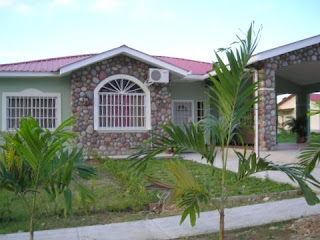This is the emergency or back up meat that El Jefe brought home the other night. Have you ever seen such giant hot dogs? This package of 10 hot dogs weighs 2.25 KILOs! That computes to one-half pound of meat per hot dog. He guards these away in the freezer for those days when his mujer (woman) isn't providing him with enough meat. I never touch them.
-------------
I am one of those people who completely tune out commercials. I don't see them, I don't hear them, and when it's over I couldn't even tell you what product it is that I'm supposed to buy. Marketers, your million dollar ads are completely wasted on people like me.
However, very rarely I do catch a commercial. I was fascinated by the commercials for the iPhone and the skinny Macbook or whatever it was called. Not that I had any interest at all in buying one, but I liked to watch those commercials. I liked to see the MacBook slide out of the interoffice envelope. I don't know if it was the music that caught my attention or what. Someone should find out, though, because it could be very valuable to know.
-------------
I caught a commercial the other night that made me laugh out loud! True to form, I couldn't tell you the name of the company, but a great commercial nonetheless.
A guy and a girl are eating at a fast food restaurant. This is all from memory from a few days ago so feel free to correct me if I'm wrong, but the conversation goes something like this:
Girl: "This salad is really good. Do you want to try it?"
Guy: "No, thanks. I'm a meatatarian."
Girl: "Huh?"
Guy: "I'm a meatatarian. I only eat meat. It's a personal choice. I hope you can respect that."
Did you laugh? Wow. I did. Oh, I love made up words like that. I think everyone should eat whatever they want to eat and not be judgmental about others (except when it comes to ketchup, of course). I eat meat. I eat veggies. I think if I had to make a personal choice, I would be happiest to be a Carbatarian (my own made-up word). No one would approve of that, would they?
In trying to find out more about this silly commercial, I discovered that there is a whole Meatatarian movement out there.
I think that I could live without meat but I've just never tried. Trying to do that in my household would go over like a .... (give me something here; I don't want to say 'lead balloon').... something not good. It could result in a sort of international incident. A culture clash of immense proportions.
Them Hondurans, they likes their meat! Three heaping plates of meat a day would put any Honduran in heaven. It doesn't even have to be chewable. When I first moved here, I said the country should be called "Meats-R-Us."
Wait! To be fair, my El Jefe loves fresh veggies, green salads, pasta salads. I've introduced him to tons of fresh veggies that his family could never afford when he was growing up and they probably weren't available anyway.
But in the interest of full disclosure, if I announce that I'm going to make a salad for a meal (What?! A salad is NOT a meal! How un-Honduran is that?), he will ask, "Well, you are going to put some meat in it, aren't you?" so I usually do add some chicken or something so he won't just waste away and die from not having meat at one meal.
It is entirely possible that Hondurans are behind this entire Meatatarian movement.
The following video shows that even plants like to eat meat:


































 Welcome to my Blogicito —
Welcome to my Blogicito — 








